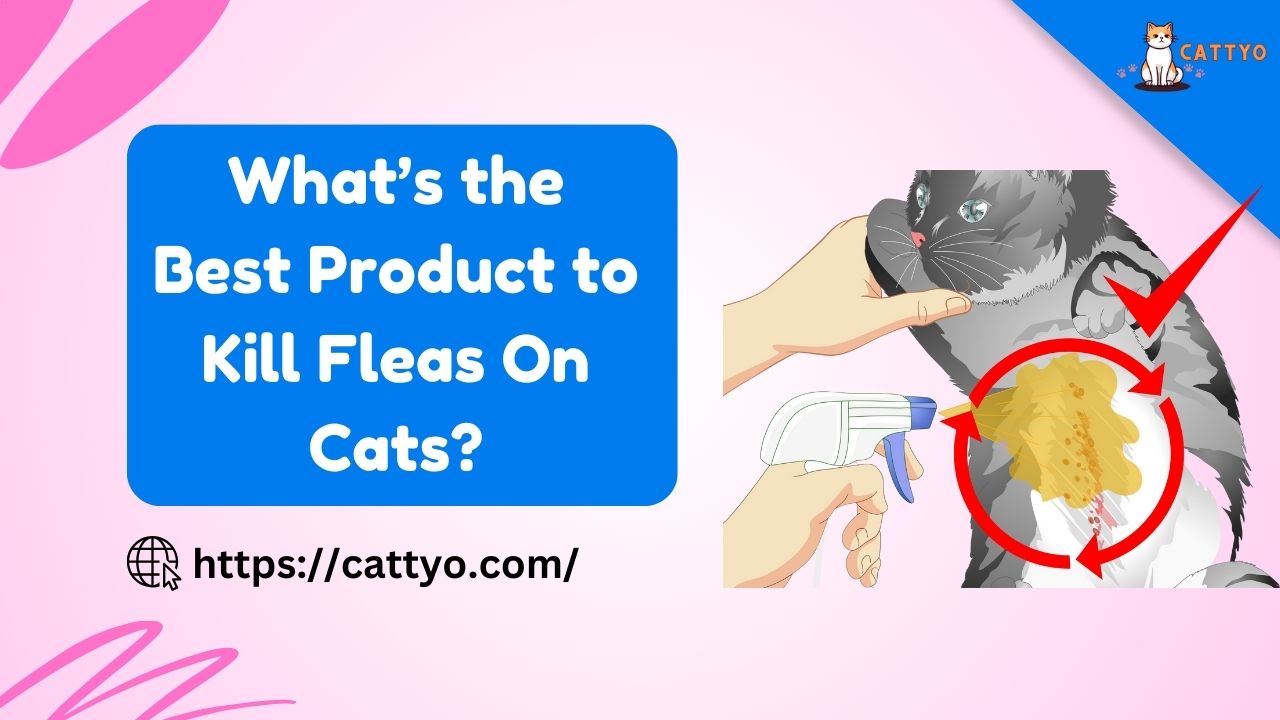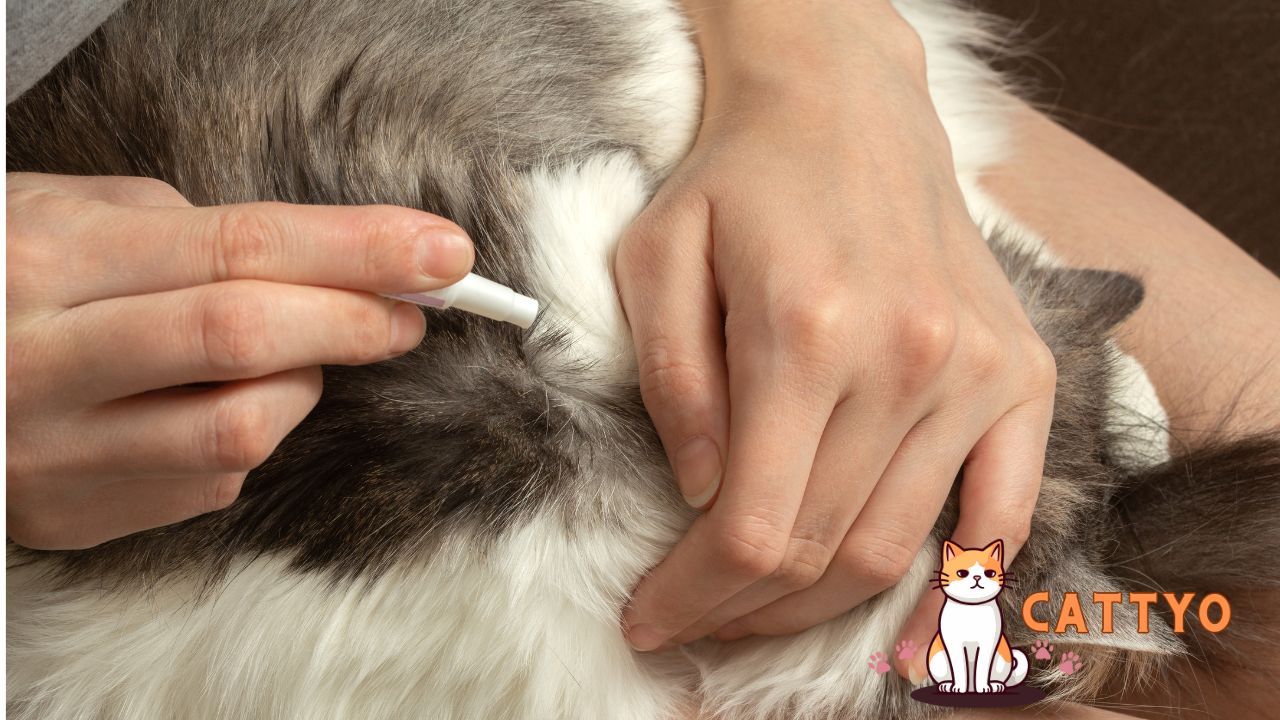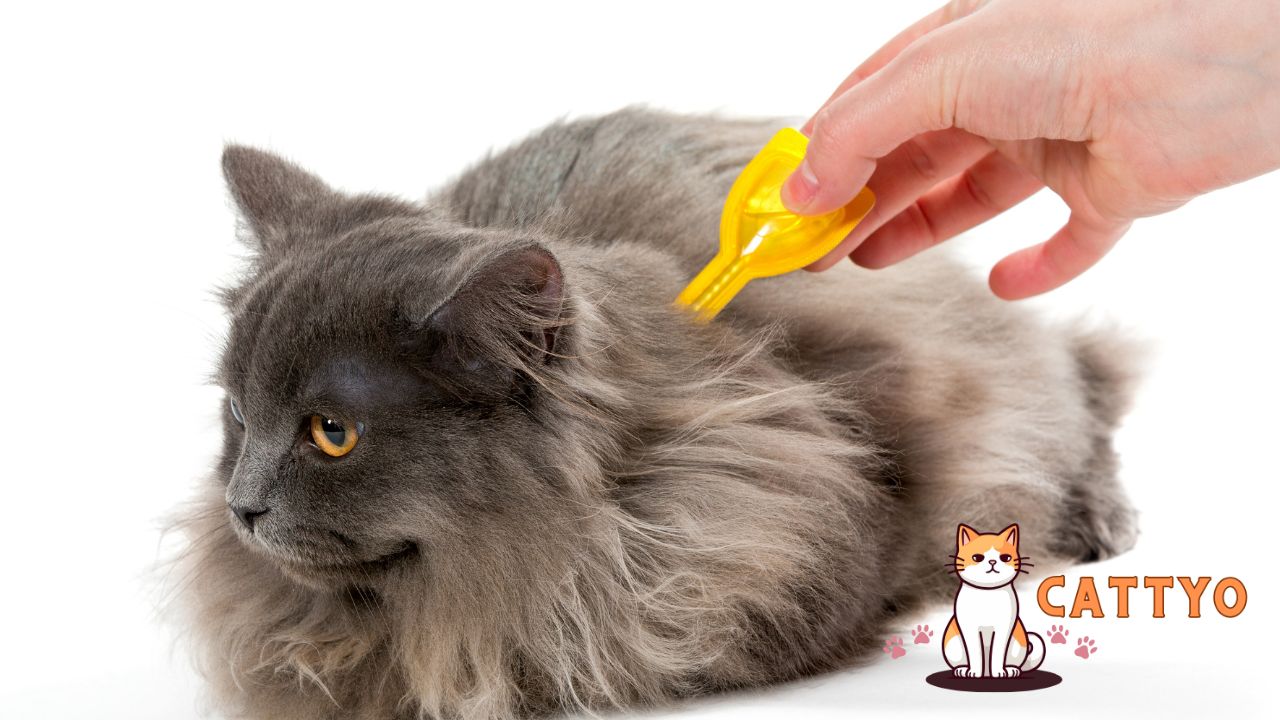Fleas. Ugh. Just saying the word gives me the chills. If you’re a cat parent, you probably know the struggle of trying to rid your furry friend of these tiny bloodsuckers.
They’re sneaky little creatures, too—so tiny you can barely see them, yet they’ll quickly turn your cat into an itchy, uncomfortable mess.
But don’t worry. We’re here to talk about the best products that’ll help you kick those fleas to the curb.
But wait, hold up. Before we dive into all the options, I get it: there’s a lot of confusion about what works best for fleas on cats.
If you’ve ever stood in the pet store aisle, staring at a million bottles and treatments, you’re not alone. So let’s simplify things, break it down, and get your cat back to their happy, flea-free self.
1. Topical Treatments: Simple and Effective
First things first, let’s talk about topical flea treatments. If you’ve ever Googled “best flea treatments for cats,” chances are you’ve seen the brand names Frontline Plus, Advantage II, and Revolution pop up.
These products are tried-and-true staples in the flea-killing world. Why? Because they work.
A Quick Story:
I remember when my friend Lily’s cat, Boots, came down with a flea problem. After what seemed like an eternity of scratching and flea bites, she decided to try Frontline Plus.
Within a few days, Boots was back to his old self—chasing after toy mice and lounging in sunbeams, free from the constant itchiness. I was like, “Where’s the miracle for humans, huh?”
These topical treatments work by releasing a pesticide that’s absorbed into your cat’s skin, killing fleas on contact and disrupting their life cycle. Easy to apply and lasts for weeks—what’s not to love?
But—here’s the catch: Some cats have super sensitive skin, so you’ll want to test a small area before applying the full dose.
If you see any signs of irritation, like excessive licking or redness, a different treatment might be necessary.
2. Flea Collars: Convenience Meets Long-Term Protection
Now, if you’re looking for something that provides longer-lasting protection without a ton of hassle, flea collars might be the solution.
The Seresto Flea and Tick Collar is probably the most well-known, and for good reason. It’s effective for up to 8 months—yep, you read that right—8 months of flea-free living for your cat.
What makes Seresto stand out is that it releases a controlled amount of flea-killing chemicals over time, keeping your cat protected for the long haul.
Plus, it’s waterproof, which means you don’t have to worry about it losing effectiveness if your cat decides to take a dive into the nearest water bowl (or worse, your toilet).
Personal Take:
I have to admit, I wasn’t always a fan of flea collars. They seemed a bit old-fashioned, right? But after hearing so many pet owners rave about how easy they are to use and how long they last, I gave it a try for my own cat, Luna.
She’s always running through the sprinklers, so the waterproof factor was a game changer. No more reapplying topical stuff every few weeks—it’s been a lifesaver.
3. Oral Medications: The Secret Weapon
Okay, now let’s talk about something a bit more under the radar—oral flea medications. If your cat isn’t into collars or getting stuff dropped onto their skin (we’ve all been there), oral treatments like Capstar and Comfortis might be worth considering.
These tablets work fast—like, really fast—and start killing fleas within 30 minutes. They’re particularly great for a quick fix when your cat’s already infested with fleas, but they usually don’t provide long-term protection.
Hypothetical Scenario:
Imagine your cat, Fluffy, has fleas, and you need an instant solution.
You don’t have time to mess around with topical treatments, and you’re not about to wrestle her into a collar. That’s where Capstar shines. Pop a tablet in her food, and bam—fleas start dying off.
You’ll see results almost immediately. But remember: these oral meds are more like a quick relief rather than a long-term solution.
To keep the fleas away for good, you’ll need to pair them with other treatments.
4. Natural Flea Treatments: The Holistic Approach
If you’re more into natural remedies (hey, we all have our preferences), there are a few options out there that use plant-based ingredients to fight fleas.
Diatomaceous earth and neem oil are popular natural flea killers that can be sprinkled on your cat’s fur or mixed into their environment.
While these options may not pack the same punch as chemical treatments, they can help with minor flea issues or as part of a broader flea control plan.
I had a friend who swore by diatomaceous earth—she dusted her entire house with it, and after a couple of weeks, her cat, Jasper, was flea-free. I have to say, it felt a little like sprinkling magical powder around, but it worked.
Quick Tip:
If you’re going the natural route, make sure to be cautious. Some essential oils are toxic to cats (like tea tree oil), so always research first and double-check that the products you’re using are safe for your feline friend.
5. Flea Shampoos: The Old-School Approach
Last but not least, let’s talk about flea shampoos. There’s nothing quite like giving your cat a good scrub to tackle fleas head-on.
Adams Plus Flea & Tick Shampoo is a favorite among many cat owners. It kills fleas on contact and leaves your kitty smelling fresh.
However, using a flea shampoo comes with a few caveats. Cats, in general, aren’t fans of water (I don’t blame them), and washing your cat can be a bit of an ordeal.
Plus, the shampoo often doesn’t provide lasting protection—so you’ll need to follow up with another flea treatment to keep the pests away.
Reality Check:
I tried this with my own cat once (I mean, we’ve all been there, right?) and let’s just say it wasn’t a pleasant experience for either of us.
Sure, Luna came out feeling clean and flea-free, but it took me a good hour to dry her off afterward. And, well, let’s just say I didn’t get invited to any more family gatherings after that.
Flea Control for Cats: Which Product is Best for You?
Okay, so we’ve covered a lot of ground. But what’s the takeaway?
If you want quick relief, oral medications like Capstar or Comfortis might be the way to go.
If you’re looking for something more long-term, Frontline Plus or Seresto Flea Collars are your best bets.
And if you prefer natural, plant-based options, then diatomaceous earth or neem oil could be an alternative—just make sure they’re safe for your cat.
I know, I know. It’s a lot to process. But I’m sure you’ll find what works best for your cat. Just remember to take it slow, observe your cat’s reaction, and always check with your vet if you’re unsure.
After all, our kitties deserve the best, and keeping them flea-free is the first step toward making them comfortable and happy.
Quick Comparison Table: Best Flea Treatments for Cats
| Product | Type | Duration of Effectiveness | Main Benefit | Best For |
|---|---|---|---|---|
| Frontline Plus | Topical Treatment | 1 Month | Kills fleas, ticks, and prevents hatching | Cats with tick problems too |
| Advantage II | Topical Treatment | 1 Month | Fast-acting, kills fleas on contact | Cats with immediate need |
| Revolution | Topical Treatment | 1 Month | Multi-purpose (fleas, ticks, ear mites) | Comprehensive protection |
| Seresto Flea Collar | Flea Collar | 8 Months | Continuous, water-resistant protection | Low-maintenance owners |
| Capstar | Oral Medication | 24 Hours | Rapid, kills fleas quickly | Immediate flea relief |
FAQs On Best Product to Kill Fleas On Cats
Q: How do I know if my cat has fleas?
A: Look for signs like excessive scratching, biting at the fur, and tiny black specks (flea dirt) in your cat’s fur. If you see any of these, it’s time for a flea treatment!
Q: Can I use a dog flea treatment on my cat?
A: Nope! Dog flea treatments are often too strong for cats and can be toxic. Stick to treatments specifically made for cats.
Q: How long does it take for flea treatments to work?
A: It depends on the product, but topical treatments can start killing fleas within a few hours, while oral medications can work in as little as 30 minutes.
Q: Are natural remedies effective for fleas?
A: They can help, but for a serious flea problem, chemical treatments are usually more effective. You can always use natural remedies as a supplementary measure.
Final Touch
No one likes seeing their cat uncomfortable, and flea infestations are a major source of stress. But with the right treatment, you can easily get your feline back to their usual self in no time.
So, it’s a topical treatment, flea collar, or oral medication, there are plenty of options to keep your cat’s fur free from those annoying pests. So, take your pick, take action, and say goodbye to fleas!




